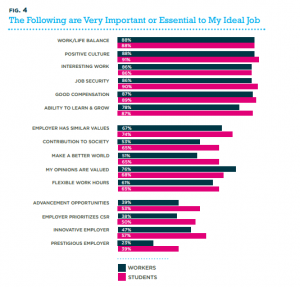The Investor Case for a Living Wage
Worker advocates have rightly celebrated recent labor wins for employees in the United States, but even these efforts haven’t been enough to keep the lowest wages at pace with inflation.
Despite global growth and productivity gains, more than 214 million workers live in extreme poverty and many more earn less than a living wage, leaving hundreds of millions of workers unable to meet their families’ basic needs. Income inequality in the United States has grown steadily in recent decades, contributing to an 18% increase in the wealth gap between the top 1% of earners and the bottom 60% from 1989 to 2022. When we take race into account, the gap becomes simply appalling, with white households holding 52% more wealth than Asian, Pacific Islander, American Indian, and multi-race households—collectively, the next-best-off group.
The good news is that investors can leverage corporate governance rights such as proxy voting to solve the poverty wage crisis and increase the value of their diversified portfolios instead of punishing companies that raise their base pay. Investors with a cumulative $1.5 trillion in assets have consequently filed shareholder proposals at Walgreens, Walmart, Target, and Kroger asking them to pay a living wage. Loosening the pressure on companies to continuously grow profits and stretch their margins by keeping wages down will help prevent them from hurting workers and the global economy.
In the U.S., the federal minimum wage is $7.25 per hour, or about $15,000 per year for a full-time worker. A living wage—one sufficient to pay for food, shelter, clothing, and other basic needs—is closer to $25 per hour. Worker advocates have rightly celebrated recent labor wins for employees in the U.S., but even these efforts haven’t been enough to keep the lowest wages at pace with inflation.
These low wages decrease worker productivity by limiting access to good nutrition, forcing individuals to have after-hours jobs that may prevent them from getting sleep, and leading to other health conditions correlated with poverty. Increasing pay just 1% could translate to decreased turnover and increased prouctivity. Since low-wage workers spend a high percentage of any additional wages, the overall economy would benefit from increased demand.
Asset managers have historically encouraged corporate executives to protect and increase enterprise value at all costs, even if that means setting wages as low as possible. But in reality, low wages have a big cost that’s passed on to investors. The Wall Street strategy of pushing individual companies to profit from poverty wages ultimately wastes human capital. This, in turn, hurts the diversified portfolios most investors own, because income inequality threatens national and global economies with losses that will burden investment portfolios for years to come.
Closing the living wage gap worldwide could lead to a more than 4% increase in global gross domestic product. This GDP growth would have significant benefits for the average investor because, over time, the value of a diversified portfolio moves in proportion to the economy’s value, since owning such a portfolio is essentially owning a piece of the economy. Business models that rely on low wages drag down the economy, and investment portfolios with it.
Experts generally agree that high rates of income inequality are also destabilizing. A 2017 work described a violent “Four Horsemen of Leveling” inequality: mass mobilization warfare, transformation revolutions, state collapse, and (with eerie prescience) lethal pandemics. It argued that these have periodically reduced inequalities dramatically because they can lead to the alteration of existing power structures or wipe out the wealth of elites and redistribute their resources. Such leveling forces become increasingly inevitable as inequality grows. While it is too soon for us to see if the COVID-19 pandemic will bring about such leveling, its economic damage has been devastating.

There are two reasons why low wages may persist despite the clear benefits to increasing them. First, company executives incentivized by stock options can use low-wage strategies to boost their own bottom lines without regard to the true cost of the inequality for which they are responsible. Second, investment managers with concentrated portfolios who load up on such businesses appear to beat the market for their clients but are really hurting valuable human capital, which in turn compromises their clients’ overall returns because the economy’s direction has a greater impact on performance than that of individual companies.
The living wage shareholder proposals at Walmart, Target, and Kroger have yet to come to a vote. Walgreens Boots Alliance shareholders owning more than 56 million shares voted for the proposal. These shareholders own 13% of the voted shares held by non-insiders—a significant result, given that investors are often reluctant to support proposals to change corporate practice (in contrast to disclosure-focused proposals). While these proposals are unlikely at this stage to receive majority investor support—and even if they did, the companies would not be bound to comply—they help to lay the groundwork for investors to begin voting against directors at companies that underpay their workers.
Investors should make common cause with workers and insist that companies end the shell game of boosting profits with low wages that threaten diversified portfolios. By leveraging corporate governance rights, including the power to vote proxies, investors can ensure that companies pay living wages to everyone in their value chain.
Sara E. Murphy is the chief strategy officer of the Shareholder Commons.
Fast Company
(11)
Report Post








